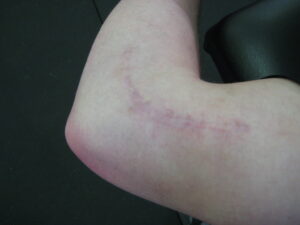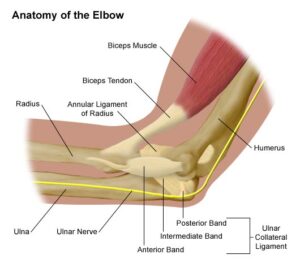Why Do Some Guys Come Back to Pitch Better after Tommy John Surgery?
Q: I was wondering the other day about why guys often come back from Tommy John surgery pitching better and harder than they did before. My first thought was they can’t do any upper-body strength training for months while they recover from the surgery, so they’re forced to work on lower body, core, and mobility – and, in turn, come back as better conditioned athletes with more control and velocity. Or, do you think their improved velocity and command is just an illusion made possible because we’re comparing them to the way they pitched while they were hurt, but not yet “disabled?” Or, is there another factor I’m missing altogether? I figure there’s a sample-size issue — we’re just looking at the guys who make it all the way back, and ignoring the ones who don’t.
A: It’s an excellent question – and one I actually get quite a bit. I’d say that it’s a combination of all three.
In my eyes, an ulnar collateral ligament tear is usually an injury that speaks to YEARS of dysfunction and accumulated stress. Guys usually have a history of elbow pain/soreness in their teenage years, some calcification on the UCL, and then it finally goes in their college/pro years. They may have been managed conservatively (physical therapy) for a long time just because doctors don’t like doing surgeries on 16-year-olds. However, when they’re 20, it becomes “acceptable” to do a Tommy John surgery.

In the meantime, many of these injured pitchers will modify their deliveries to avoid the pain and end up with some crazy mechanics that leave the ball all over the place at erratic radar gun readings. So, that can usually cover the velocity drop and control issues. This is in stark contrast to what you’ll see with serious injuries to the labrum (SLAP2 lesions), which generally give you the quick velocity drop, and eventually, loss of control – even in the absence of pain. Elbow stuff doesn’t usually directly influence velocity as quickly; a lot of guys can throw through it for years.

So, yes, we are comparing them to their pre-injury numbers. However, there is – at least in my eyes – a better reason.
They are often lazy and inconsistent with their training and arm care before they get hurt. Quite often, you’ll see an ACL reconstruction leg coming back and being stronger than the uninjured side long-term. The same thing can happen with a Tommy John. The rehab is crazy long, so guys have time to learn arm care as religion and – as you noted – focus on athletic qualities that are often partially or entirely “squeezed out” by competing demands.
I remember talking with Curt Schilling along these lines – although it was with respect to his shoulder. He had a shoulder surgery in 1995, and it made him “religious” about arm care. His best years came years after that even though he’d gotten older.
So, usually, the guys who wind up throwing harder are just the ones who were lazy in the first place and were finally forced into actually taking care of their bodies. The guys who DO take good care of their arms and wind up tearing UCLs rarely come back throwing harder, and to be frank, probably have a lower chance of returning to their former selves than their lazy counterparts.
Of course, this obviously excludes issues with the graft type (autograft or allograft), graft site (Palmaris longus, hamstrings, or another site), surgeon’s abilities, physical therapy, athlete motivation, strength and conditioning, and return-to-throwing progression.
To learn more about assessment and management of the throwing elbow, check out my Everything Elbow In-Service video.




